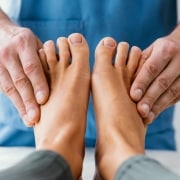3 Reasons to Use Orthotics
Orthotics are shoe inserts used to relieve discomfort in the foot or heel, and they’re worn for a number of reasons. The most common reason for orthotics in Pflugerville or Austin, TX is pain or swelling (or some combination thereof). We’ll look at when they’re the most helpful, so you know if they’re a good investment for your feet.
1. You Have Plantar Fasciitis
This common condition occurs when the band of tissue in your heel becomes inflamed. Orthotics provide a cushion and more stability to your arch, which can help relieve the discomfort. If you’ve ever experienced this disorder, you might be surprised at just how much relief you can get.
2. You’re Having Trouble Balancing
Orthotics often come down to the strength of your arch. High arches can lead from anything to calluses to ankle instability. Flat arches can cause balance-related issues. In both cases, an insert can help correct your arches, so you don’t have to worry about falling over.
3. You Have Diabetes
Diabetes can cause nerve damage, which can make it difficult to notice problems in the foot before they get worse. Orthotics can help you evenly distribute pressure along the foot, so you can correct your posture and reduce the odds of swelling or corns. They may even be able to help you control back pain because your weight will be more evenly distributed.
Podiatrists in Austin, TX
At Dr. Jeffrey W. LaMour’s office, you’ll find a staff that can help you with anything from bunions to hammertoes. If you have questions about whether orthotics are right for your foot ailments, we give you a thorough assessment before making a recommendation. If you’re looking for a podiatrist in Austin or Pflugerville, TX, contact us today to see what we can do.








